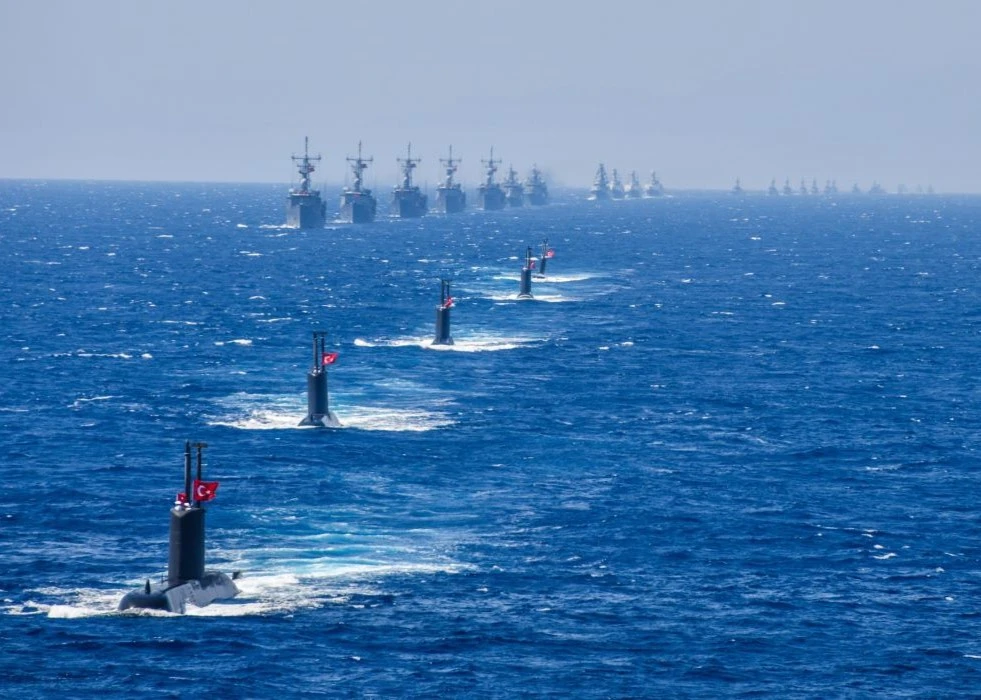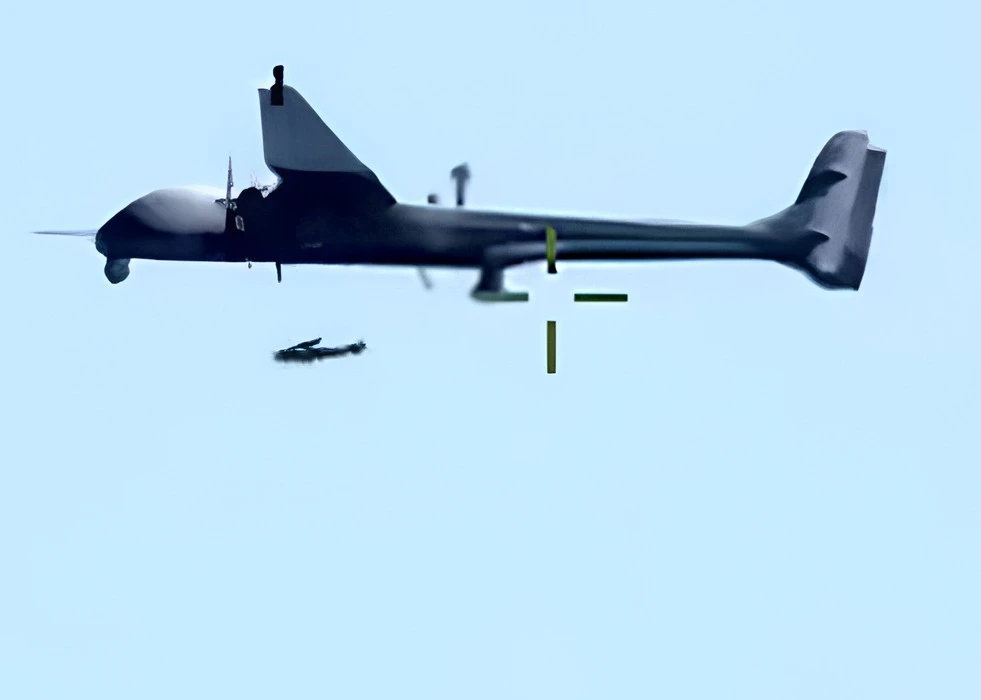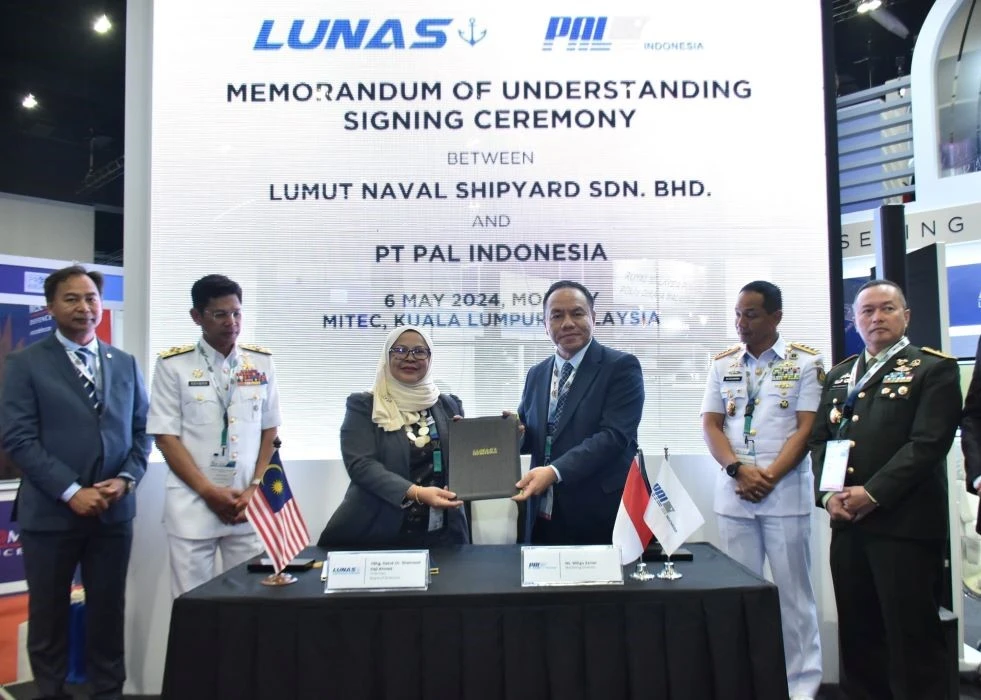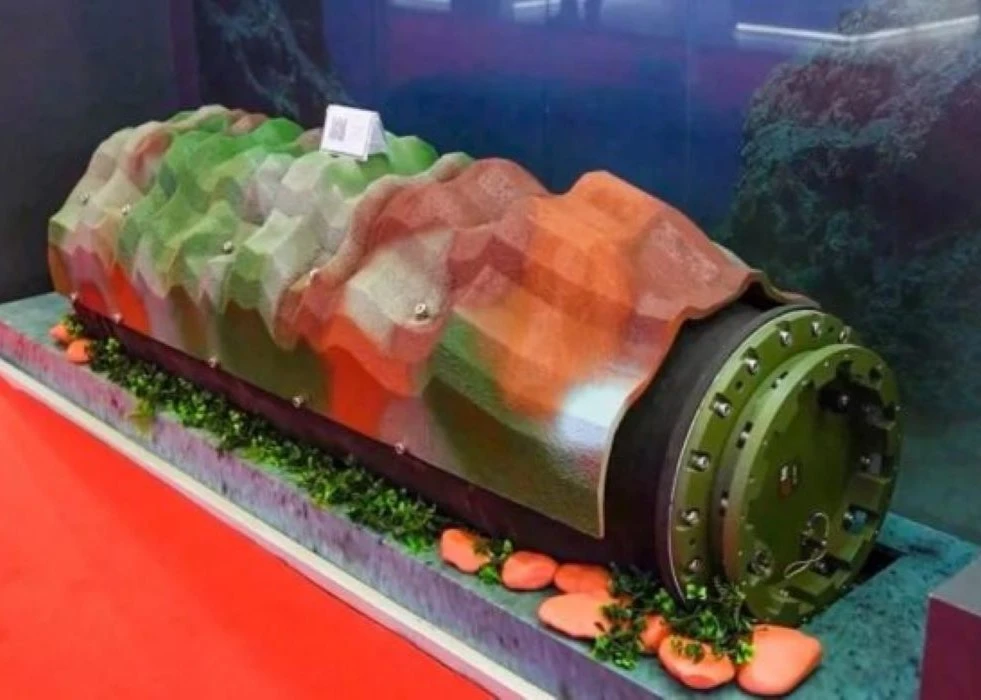PART II
PAKISTAN NAVY
BLUE WATER CAPACITY
AND
ANTI-SUBMARINE WARFARE CAPABILITY
Over 100 platforms serve in the Pakistan Navy inventory, including law enforcement and support vessels. The country’s surface power, submarine capacity, and anti-submarine warfare capabilities will be examined in this part of the study. Since this document focuses on underwater warfare, only anti-submarine warfare weapons are included. Sonar commenting capability varies depending on factors such as environmental conditions, sea conditions, energy status of the ship, personnel training and experience level. For this reason, the performance values of sonar systems are excluded.
Blue Waters Capacity of the Pakistan Navy
There are four frigates and one off-shore patrol ship class in the Pakistan Navy inventory. Co-operation is in progress with Turkiye to construct two class ships.
A) Major Surface Combatants
1) Alamgir Class Guided Missile Frigate
The sole platform in the Pakistan inventory of class is PNS Alamgir (F 260). The ship does not have the Mark 13 guided missile launch system used in Oliver Hazard Perry-class ships.
PNS Alamgir, which acceptance tests to Pakistan were completed in 2011, operates with eight RGM-84 Harpoon launchers on the bow section. Deprived of the RIM-66 SM-1 surface-to-air missile capability, the ship’s air defence capability only consists of a Mark 75 76-millimetre cannon on the midship’s upper deck. The ship has 36 Super Rapid Bloom Offboard Countermeasures Chaff and Decoy Launching System on board.
Equipped with an AN/SLQ-25 Nixie towed decoy against torpedo threat, the ship also has Mark 36 SRBOC countermeasure system and AN/SQS-56 hull-mounted sonar. According to some sources, the vessel has SOR 19 passive towed array sonar capability. The platform can conduct anti-submarine warfare with the Harbin Z-9EC helicopter carried on board.
The frigate also has two triple Mark 32 torpedo tubes capable of launching 324-millimetre Mark 46 torpedoes, Mark 15 Phalanx 20-millimetre close-in weapon system and machine gun armament. Ships can reach a range of 4,500 nautical miles at 20 knots.
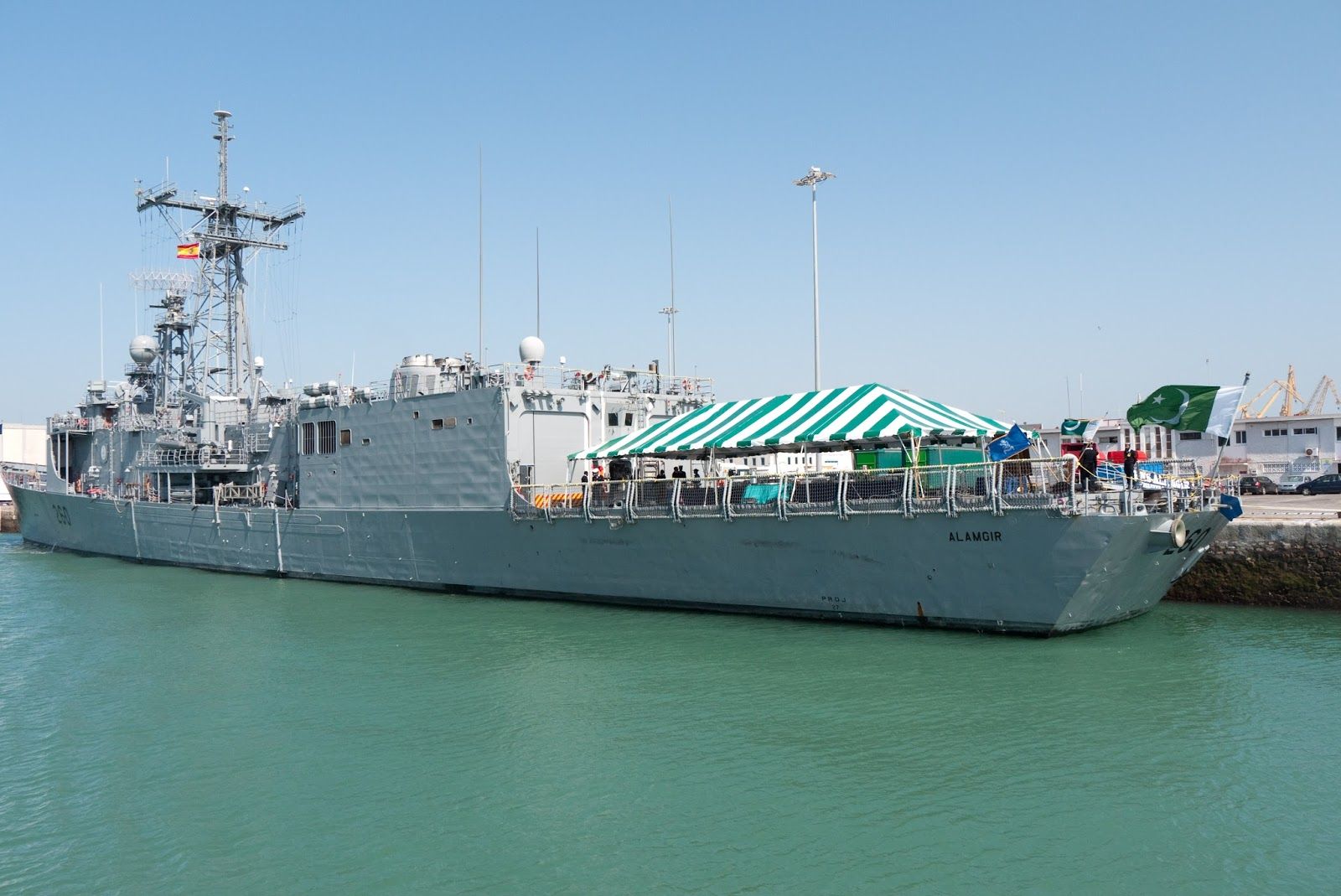
2) Tughril Class Guided Missile Frigate
Two Tughril-class platforms currently operate in Pakistan’s inventory: PNS Tughril (F 261) and PNS Taimur (F 262). Two more platforms are expected to join the navy inventory.
Platforms developed from China’s Type 054A class have advanced sonar infrastructure. Equipped with air defence systems, frigates are the most capable export model ship China has ever developed. On platforms carrying LY-80N surface-to-air guided missiles for air defence purposes, four CM-302 guided missile launchers, two Type 87 six-launcher anti-submarine warfare rocket launchers, two Yu-7 anti-submarine warfare torpedo tubes, one 76-millimetre H/PJ-26 gun and two Type 1130 close-in weapon systems
The Type 054A/P class ship, which has a reduced radar cross-section hull structure, can also carry out anti-submarine warfare tasks with a 10-ton class helicopter.
Platforms are equipped with an MGK-335 active/passive sonar system and H/SJG-206 towed array sonar equipment. It is estimated that ships have two Type 726-4 decoy launchers and can reach at least 3,700 nautical miles.
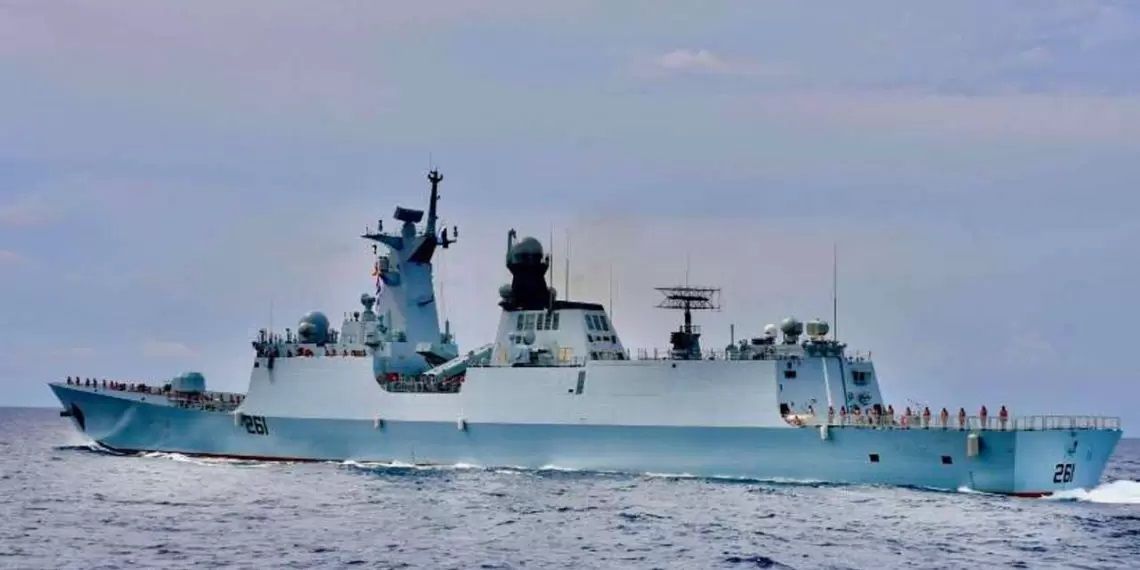
3) Tariq Class General-Purpose Frigate
Of the platforms procured via direct acquisition from the Royal Navy, only the PNS Tariq (F181) is operational. It is known that the Type 21 class platform, which was transferred to the Pakistan Navy in Karachi Port in 1993, was subjected to a mid-life upgrade between 1998-2002. Before the ship’s delivery to Pakistan, the Exocet and Seacat missile systems were removed.
As part of the activities carried out under the Karachi Shipyard and Engineering Company (KS&EW) contract, the Mark 15 Phalanx 20-millimetre close-in weapon system, Mark 36 SRBOC countermeasure equipment and various barrelled weapons were integrated into the platform. In addition, a six-cell LY-60N surface-to-air missile system is amongst the weapons installed to regain the air defence capability of the frigate. PNS Tariq, which can carry one 5-ton class helicopter, can reach a maximum speed of 32 knots. The vessel can reach 37 knots for a limited time when necessary.
The platform has Type 184B, Type 162M and ATAS sonar. There is also a Type 182 towed torpedo decoy system on board.
The ships are equipped with a Vickers 114-millimetre 55 calibre Mark 8 main gun, a 20-millimetre Mark 15 Phalanx close-in weapon system, two air defence guns, and two triple 324-millimetre Mark 32 torpedo tubes. The United Kingdom did not want to give the Exocet missiles to Pakistan during the delivery, so the systems were dismantled. RGM-84 Harpoon-guided missile is integrated to fill the post-delivery capability gap of vessels. Tarik Class frigates can reach 4,000 nautical miles at 17 knots.

4) Zulfiquar Class General-Purpose Frigate
Zulfiquar class ships, also known as Sword or F-22P. The hull of the frigates, developed from China’s Type 053H3 design, has a structure that reduces the Radar Cross Section area. Currently, PNS Zulfiquar (F251), PNS Shamsheer (F252), PNS Saif (F253) and PNS Aslat (P254) are on active duty. The length and displacement of PNS Aslat are greater than its predecessors.
The platforms, also described as guided missile frigates, have one 76-millimetre AK-176 main gun and two H/PJ-12 30-millimetre close-in weapon systems. The guided-missile power of the frigates consists of one HQ-7 surface-to-air missile with eight launchers and two C-802 surface-to-surface guided missiles with four launchers.
The ships also have two triple ET-52C torpedo tubes and two six-launcher RDC-32 anti-submarine warfare rockets. Platforms lacking sonar equipment have a hangar and helipad infrastructure suitable for operating a 10-ton class helicopter. Ships can reach a range of 4,500 nautical miles at a speed of 18 knots.
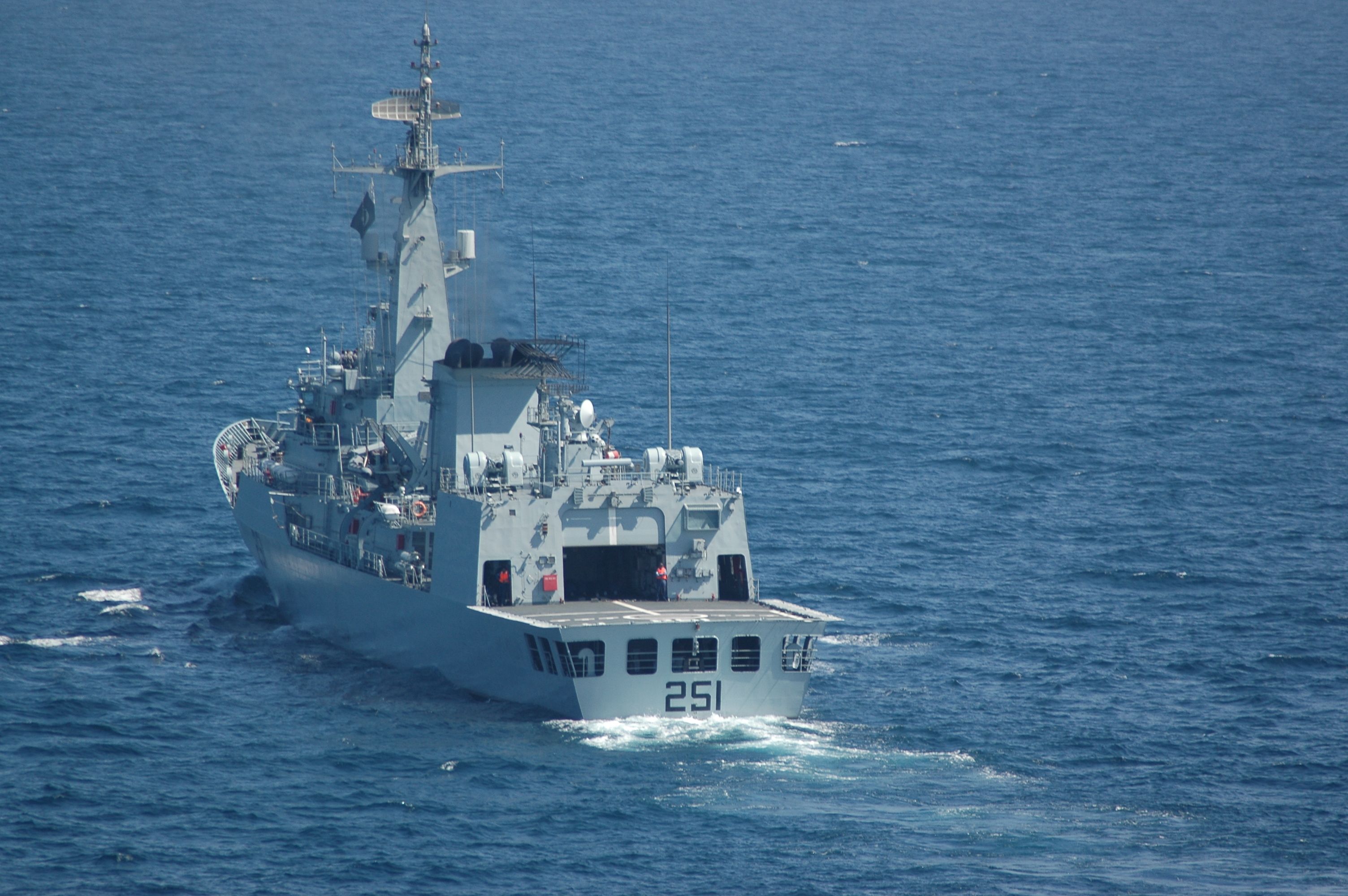
B) Off-Shore Patrol Platforms
There is only one off-shore patrol corvette in the Pakistan Navy inventory. In addition, the diversity of platforms will be increased with the ongoing PN MilGem Project.
1) Yarmook Class OPV
The main task of the ships, which have customised designs based on the OPV 1900 of the Netherlands-based Damen Shipyard, is to perform patrol duties in the open sea. The vessel can launch anti-ship missiles, equipped with one 30-millimetre cannon, one Mark 15 20-millimetre close-in weapon system and machine guns. It is known that second-batch platforms will have a more advanced air defence system infrastructure. Vessels lack sonar equipment and have a helipad and hangar structure suitable for operating a 10-ton class helicopter. Platforms can reach a range of 6,000 nautical miles at 12 knots.
C) Ongoing Projects
Pakistan Navy has been in close relations with Turkiye in shipbuilding recently. In this context, two important projects, the PN Milgem Class corvette and Jinnah Class frigates, are progressing to include technology transfer and construction in Pakistan. It is aimed that Pakistan’s open sea surface power will gain necessary capabilities with Babur Class corvettes with a hull with reduced radar cross-section and frigates that are likely to be designed with similar structures. Many Turkish companies also undertake essential tasks in the projects.
1) Jinnah Class Frigate
The design and development process, which was first introduced at the IDEF 2021 International Defence Industry Fair, continues. In the process that ASFAT will provide support within the scope of the technology transfer agreement, there is no definite information about the weapon load and capabilities of the ships yet.
2) Babur Class Corvette
The ships designed within the scope of the PN MilGem Project were developed from the Ada Class corvettes, which are active in the inventory of the Turkish Navy and exported to Ukraine. Construction activities were shared between the shipyards in Pakistan and Turkiye. The works of the first ship PNS Babur (280), are carried out in Istanbul Shipyard, while the second platform PNS Badr (281), is carried out in Karachi. The construction of the first two corvettes, followed by the two ships, continues on the slipway. PNS Khaibar (282) is being built in Istanbul, and PNS Tariq (283) is being constructed in Karachi. PNS Khaiber is expected to be launched very soon. The first ship of the project, PNS Babur, is planned to be delivered to Pakistan Navy in August 2023.
In the corvettes, for which various Turkish companies undertake the central systems’ subcontractors, there is an Oto Melara76-millimetre main gun, an ASELSAN Gökdeniz 35-millimetre close-in weapon system, and two ASELSAN STOP 25-millimetre Remotely Controlled Weapon Systems (RCWS). 16 CAMM-ER Albatros-NG surface-to-air missiles and anti-ship missiles are planned for corvettes. The Harbah system, a naval model of the Babur cruise missile, is on the agenda for surface-to-surface attack payload. The corvettes, equipped with Meteksan YAKAMOS hull-mounted sonar, will have two triple Mark 32 torpedo tubes for anti-submarine warfare capability. Platforms with the ASELSAN Hızır torpedo countermeasure system also have a helipad and hangar infrastructure suitable for 10-ton class helicopter operation. It is planned that the ships will be able to operate for 15 days without resupply and reach a range of 3,500 nautical miles.
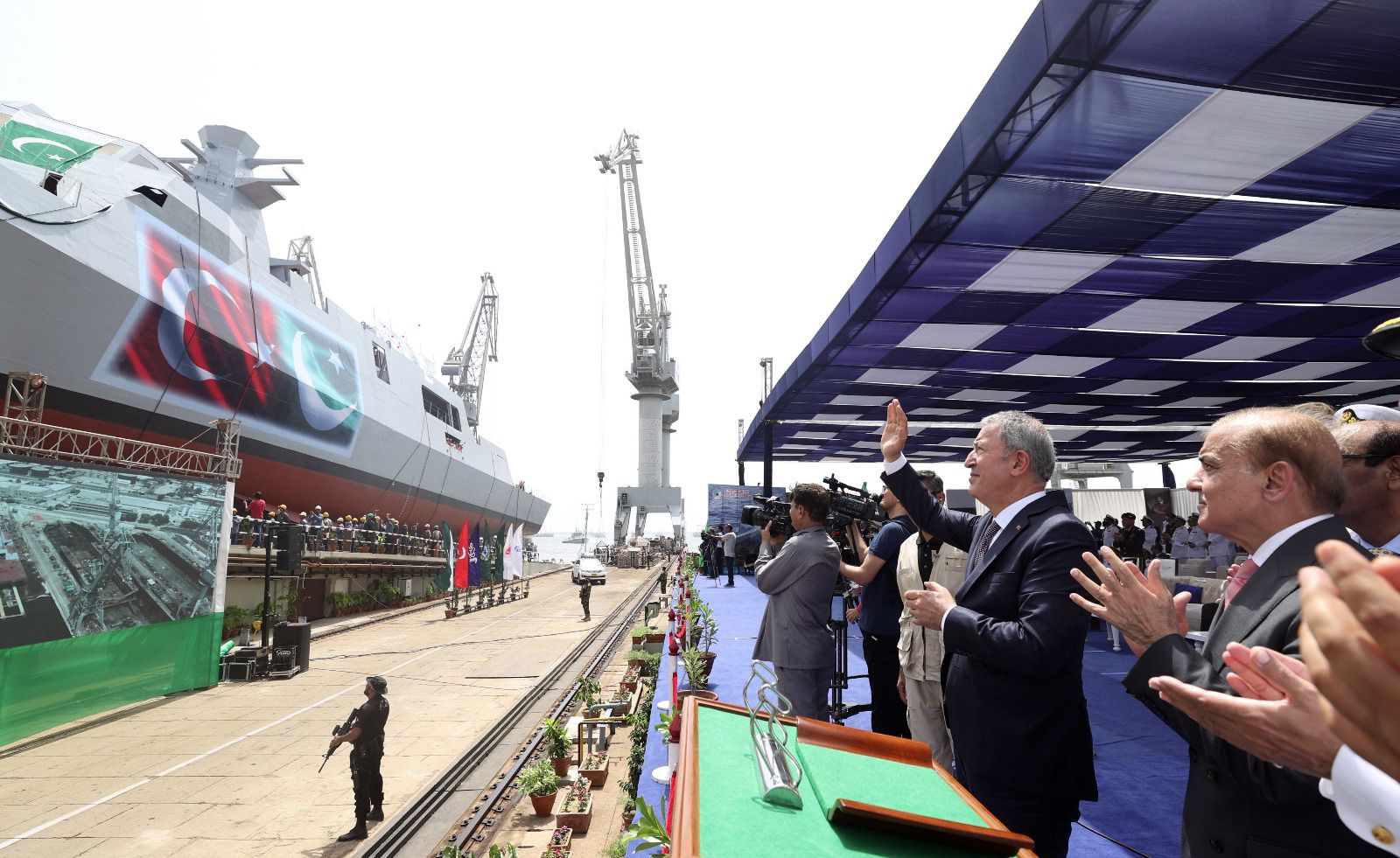
Azmat, Yonca-Onuk production Jallalat based on MRTP-33, and Kurrat class patrol boats also serve in the Pakistan Navy inventory. These platforms do not have anti-submarine warfare capability as a surface combat power. Vehicles are not included in the document as they cannot perform off-shore missions.
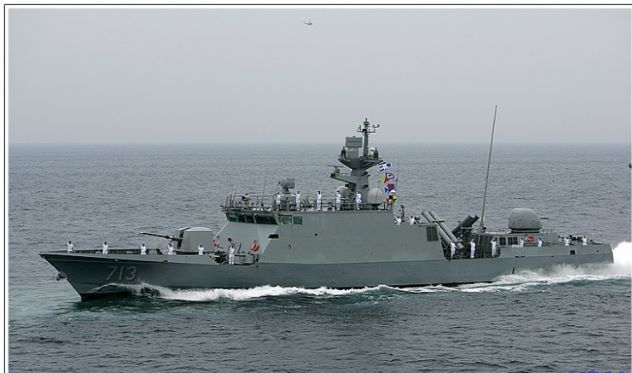
Submarine Power of the Pakistan Navy
There are two classes of submarines capable of operating on the high seas in the Pakistan Navy inventory. In addition, there is a 1 class pocket submarine within the force, which is suitable for serving only in coastal waters. A joint project with China is also being carried out to consolidate underwater power.
A) Diesel-Electric Submarines
1) Agosta 90B Class Submarines
Three platforms from the Agosta 90B class submarines, developed by France, which can conduct long underwater patrol tasks thanks to their air-independent propulsion capability, serve in the inventory of the Pakistan Navy.
The ships were named PNS Khalid (S137), PNS Saad (S138) and PNS Hamza (S139). Platforms, also known as Khalid Class, are known to be the highest displacement models of their class.
Agosta Class submarines were developed as a preliminary study of Rubis class submarines. For this reason, it is known that the platforms’ hull structure is developed quite strongly. The platforms have achieved a long-range ocean submarine capability thanks to their capacity. Its development purposes are known as area denial and anti-submarine warfare. The reserve buoyancy of ships, which can operate for 45 days without resupply, is around 20%.
It is known that submarines have advanced features such as lower acoustic signature, higher battery capacity, more extended mission capability and deeper diving compared to their counterparts of the period.
With the improved automation infrastructure of the Agosta 90Bs, the requirement for crew has been reduced. There are four torpedo tubes in submarines, and 16 spares 533 millimetre heavy torpedoes and/or guided missiles can be stored. As a result of intense negotiations, Pakistan was able to obtain technology transfer from France along with submarines.
Thanks to the preferred HLES-80 steel in its structure, platforms that can dive to a depth of 320 to 350 metres can launch SM-39 Exocet anti-ship-guided missiles when submerged. Ships with the MESMA air-independent propulsion (AIP) system are Pakistan’s biggest trump card against the Indian aircraft carrier fleet.
An agreement was signed with Turkiye-based STM company for the mid-life upgrade of the platforms. The three ships’ entire sonar suite, periscope, command and control, radar and electronic support systems were renewed as part of the activities. Havelsan and ASELSAN also took part in the project. The pressure hull of the vessels and critical structural components were maintained and repaired, and the necessary parts were replaced. In addition, system and platform integration processes were also provided.
It is known that the platforms had TSM 2233 active/passive sonar systems before modernisation. Ships can reach 8,500 nautical miles at 9 knots with a snorkel, 350 nautical miles at 3.5 knots without a snorkel, and 1,950 nautical miles at 3.5 knots with MESMA.

2) Agosta 70 Class Submarines
Agosta 70-class submarines built for the Republic of South Africa were delivered to Pakistan after the embargo.
Currently, two submarines are, PNS Hashmat (S135) and PNS Hurmat (S136) in active use. Boats are equipped with DUUA 2B active/passive, TSM 2233D passive, and TSM 2933 towed passive sonars.
The diesel-electric submarines, operating under the name Hashmat Class, have four 533-millimetre torpedo tubes. It is known that vessels can carry 20 spares 533 millimetre heavy torpedoes and/or guided missiles and can launch UGM-84 Harpoon anti-ship missiles as well.
Platforms can reach 8,500 nautical miles at 9 knots with a snorkel and 350 nautical miles at 3.5 knots without a snorkel.
B) Midget Submarines
There are three Cosmos class midget submarines in the Pakistan Navy inventory. The platforms were acquired from Italy.

1) Cosmos Class Pocket Submarine
Platforms, also known as Cosmos Class midget submarines, were developed by the Italian company Cos.Mo.S (Construzione Motoscafi Sottomarinis.a.s).
Vehicles with a submerged displacement of 110 tons patrol the coastal waters; it protects ports, bases and critical facilities. According to open sources, midget submarines that reach an operational capacity of 2,500 nautical miles can operate for 20 days.
It is known that there are torpedo tubes on platforms with diesel-electric propulsion. Boats, with a total length of 28 metres, were built in Karachi Shipyard. Platforms are also used in Navy Special Forces Command tasks. It is also known that the vehicles can carry an additional special operations unit with 14 crew members.
C) Ongoing Projects
Pakistan, which has close relations with China in the defence industry, has also signed an agreement to supply submarines to the country in question.
1) Hangor Class Submarine Project
Planned to have an air-independent propulsion system Submarines were developed on China’s type 039B class platforms. A total of eight submarines are scheduled to be built. In this context, it has been stated that technology transfer will take place.
The project initiated by the Pakistan Navy to develop the submarine capability, including an air-independent propulsion system, is a strategic issue for Pakistan. In this way, it is aimed that the platforms will have underwater navigation capability for a long time, which will provide sufficient deterrence, although not as much as nuclear submarines.
It is announced that the Hangor class submarines, which are expected to become the most crucial weapon of the Pakistan Navy in terms of area denial capability, will be equipped with the Yu-6 533 millimetre heavy torpedo. It has been announced that the ships whose last four platforms will be built in Karachi will also have the capability of YJ-82 anti-ship guided missile and Babur 3 submarine-launched cruise missile.
With the Babur 3 capability, it is foreseen that the submarines will constitute the second strike capability in Pakistan’s nuclear triad. It is anticipated that Hangor class submarines will become a vital power multiplier for the country, which Pakistan Navy has previously had combat success with underwater vehicles.
Maritime Patrol Aircraft and Anti-Submarine Warfare Helicopters of Pakistan Navy
Two class maritime patrol aircraft are in the Pakistan Navy inventory, the P-3C Orion and the ATR-72MPA. In addition, ship-based Z-9EC and Westland Sea King helicopters can detect, detain, intercept and hunt underwater targets when necessary.
This section discusses only platforms with submarine-hunting capability since the document is focused on underwater warfare.
A) Maritime Patrol Aircraft
1) RAS-72 Sea Eagle (ATR-72MPA)
It was converted from ATR-72-500 commercial airliner to replace the Fokker F27 patrol aircraft in Pakistan’s inventory. The platforms provided a significant increase in capacity compared to their predecessors in terms of endurance and maximum take-off weight.
The aircraft’s conversion process was completed under Germany-based Rheinland Air Service GmbH. During the modification, the Pratt & Whitney Canada PW127F turboprop engines were upgraded to the PW127M level providing higher power output.
RAS-72 aircraft use the Leonardo Seaspray 7300E surface surveillance and targeting radar. The system, which is in X-Band AESA configuration, can perform reconnaissance and surveillance at a maximum range of 200 nautical miles and weather detection at a distance of 320 nautical miles with its 32dBi antenna. The system, with a total weight of 86.2 kilogrammes, has the track-while-scan capability to simultaneously detect, determine and observe up to 200 targets. The power of the radar is known as 2 kW.
Maritime patrol aircraft are equipped with a Star SAFIRE III electro-optical and infrared imager. The equipment allows imaging at a range of 20 to 30 kilometres.
Aerodata produced an AeroMission mission management system on the platforms. User consoles have an interchangeable architecture that can change tasks and replace each other. Aircraft with ELINT capability are equipped with tactical data links and a Ku-band satellite communication system.
RAS-72s, which can operate for up to 7 hours depending on the mission profile, weather and environmental conditions at a distance of 350 kilometres from the main base, have 9 hours of endurance. In addition to sonobuoys, the aircraft can carry 324-millimetre torpedoes at the front weapon stations and air-to-surface missiles in the rear section of the fuselage. The platforms do not have magnetic anomaly detector (MAD) capability. Currently, two RAS-72 Sea Eagles are in the inventory of the Pakistan Navy. It is planned to increase the number to four.
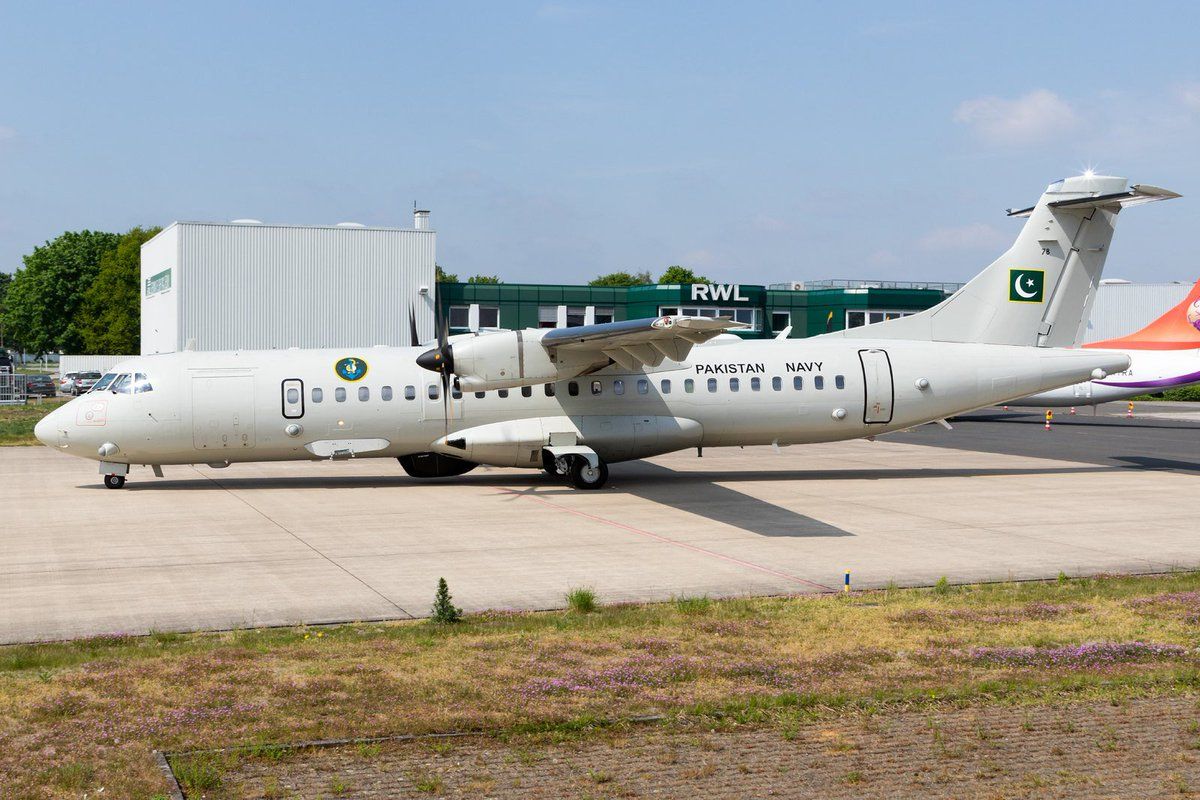
2) P-3C Orion
Known as the P-3 Orion aircraft’s most advanced model, the C variant operates with 11 crew members. The aircraft is developed for military purposes and can carry a payload under the wing. P-3s are also known for their high resistance to salt water and corrosion.
The P-3C Orion has 12-hour endurance and can increase mission time by shutting down engines at various intervals during flight. Today, aircraft approaching the end of economical operation lifespan are equipped with the ASQ-81 Magnetic Anomaly Detector (MAD) capability.
The P-3C Orion can scan in a 360-degree area thanks to the AN/APS-115 radar located in the nose and tail section. The radar, which can perform periscope scanning, can operate at up to 370 kilometres, depending on various conditions such as altitude, ambient, and sea conditions. There is also AN/APS-137D synthetic aperture radar hardware. The aircraft, which can carry sonobuoy and armament in the internal bay, can reach an operating range of approximately 2,500 kilometres, with a 3-hour endurance over the task zone. Task endurance can be extended with the engine shutdown method.
Aircraft capable of carrying weapons such as underwater bombs, various torpedoes, missiles and mines constitute Pakistan’s most crucial maritime patrol capability.
It is known that in the terrorist attack on the PNS Mehran base of the Pakistan Navy in 2011, two P-3C Orions were damaged beyond repair. In the following years, it was determined that the United States of America delivered two new aircraft to Pakistan to replace the destroyed aircraft. Currently, seven P-3Cs are operating in the Pakistan Navy inventory.

B) Naval Helicopters
Two models of anti-submarine warfare capable helicopters, Z-9EC and Mark-45 Sea King, are in service in the Pakistan Navy inventory.
1) Westland Sea King 10 Ton Class Navy Helicopter
Sea King, which has a metal fuselage and rotor structure, was developed in a foldable configuration to reduce space requirements in the ship’s hangar. Four helicopters of the Mark 45 model are in service in Pakistan’s inventory.
The 10-ton class platform’s endurance varies from approximately 3 hours to 3 hours and 30 minutes depending on environmental conditions, payload and mission planning. The maximum range is about 1,220 nautical miles.
The helicopters are equipped with MEL Super Searcher radar, AQS 902 acoustic processing system, Type 2069 immersion sonar and sonobuoy capability in an enlarged radome.
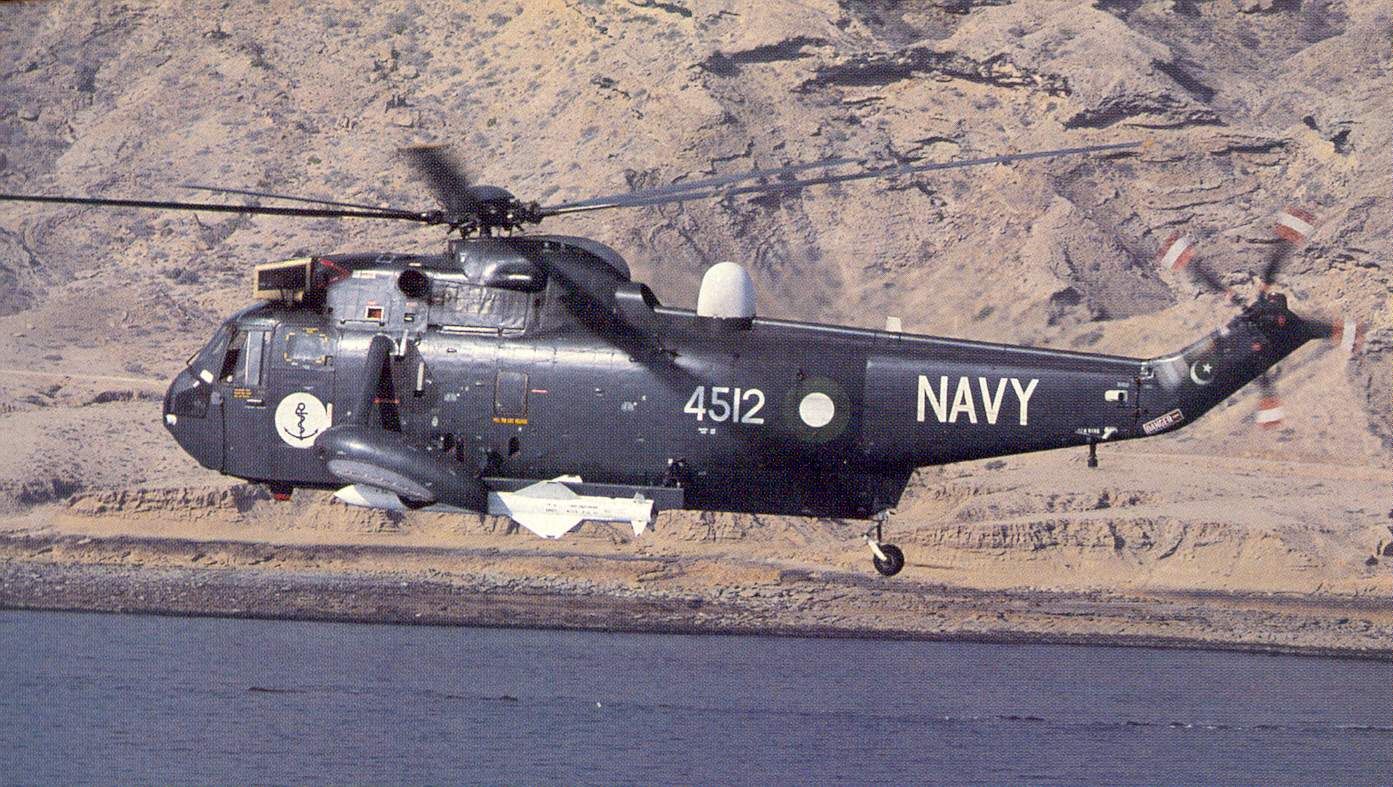
2) Z-9EC 5 Ton Class Navy Helicopter
The hovering capability and stability of helicopters with fenestron tail configuration are more advanced than conventional systems. The noise level is lower as well.
Models customised for Pakistani needs are called Z-9EC. There are seven platforms in the Pakistan inventory. The helicopters are equipped with Thales production HS-12 dipping sonar and X-Band KLC-1 radar. The system can detect a target at a range of 120 kilometres from an altitude of 1000 metres with a cross-section area of 1000 square metres.
Helicopters can operate at a maximum range of 792 kilometres, depending on the mission package and environmental conditions. Endurance is 4 hours and 15 minutes.
Z-9ECs can be equipped with guided missiles and the ET52 324-millimetre torpedo.
Torpedoes and Anti-Submarine Warfare Weapons in Pakistan Inventory
Due to the embargoes imposed by the USA, the Pakistan Navy has procured navy weapons from various countries, especially China. Germany, the United States, the United Kingdom, China, France and Turkey are among the countries that provide weapons and supplies to Pakistan. It is also on the agenda to integrate guided missiles developed with domestic means on platforms. In terms of the products used in the navy inventory, the most dominant ones are the systems of Chinese origin.
In this part of the article, only anti-submarine warfare weapons are included since this document is focused on underwater warfare. Sonar commenting capability varies depending on factors such as environmental conditions, sea conditions, energy status of the ship, personnel training and experience level. For this reason, the performance values of sonar systems are excluded.
A) Federal Republic of Germany Origin Systems
1) DM2A4 Torpedo
Within the scope of the modernisation carried out under the contractors of Turkey-based STM, modern torpedo capability was provided to Agosta 90B class submarines. In this context, DM2A4 torpedoes of German origin were integrated into the platforms.
Torpedoes, whose propulsion system has been modernised compared to their predecessors, can reach 50,000 metres range at 50 knots speed and 90,000 metres at 25 knots. The 6,550 millimetres long 533-millimetre heavy torpedo is highly resistant to jamming and countermeasures. The system can be guided via fibre optic cable. The acoustic signature of the system, which has a five-bladed fibreglass propeller and fin structure, is low.
The torpedo was designed considering the conditions of the Baltic Sea. For this reason, it is known to be effective in shallow waters. The guidance system can scan 100 degrees laterally and 24 degrees vertically. The weapon, which has a 260-kilogramme PBX warhead, is driven by a high-frequency electric motor supported by a closed-circuit cooling system fed by silver-zinc oxide batteries.
An impact or magnetic-type proximity fuse is preferred in the system, also equipped with an active guidance option. Warhead and trigger mechanisms are resistant to electromagnetic pulses.
B) The United States Origin Systems
1) Mark 46 Torpedo
Mark 46 torpedoes are suitable for use against high-performance submarines. The weapon’s resistance to jamming in shallow waters was increased with the NEARTIP programme in 1989, and the Mod5A model was developed.
The torpedo is supported by a computer infrastructure that can distinguish echoes between the surface and the floor. For safety in launching from ships, the Mod 5 model of the torpedo activates its fuse after a safety distance of 15.25 meters. It uses liquid fuel, which requires caution for maintenance and storage.
Weapons, which can also be released from helicopters and fixed-wing aircraft, are launched from Mark 32 tubes on Pakistan Navy ships.
The 324-millimetre Mark 46 anti-submarine warfare torpedo is 2,590 millimetres long and weighs 235 kilogrammes. Depending on the sea conditions, the gun can reach 45 knots maximum speed and 9.250 metres maximum range. Depending on environmental conditions, the system can attack targets at up to 400 metres in depth. The torpedo has an active-passive guidance system and a high-explosive warhead weighing 44.5 kilogrammes.
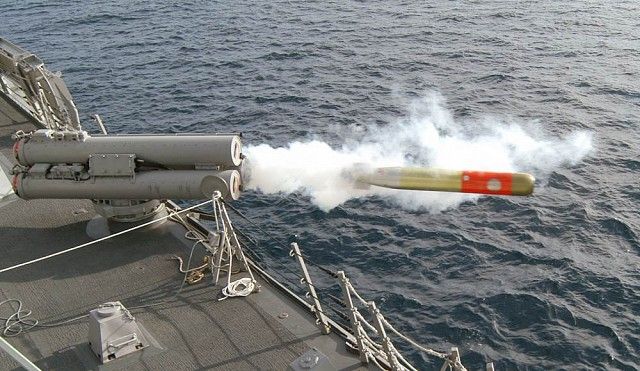
C) Systems Originating in the People’s Republic of China
1) Type 87 Anti-Submarine Warfare Rocket System
There are six launchers in the Type 87 Anti-Submarine Warfare Rocket system developed by China. The hardware is also known by the name FQF-3200. The design adopted an infrastructure that can be directed to targets in different directions simultaneously with the autonomous system. Systems were developed from the Type 61, produced by the reverse-engineering method of the Russian RBU 1200 anti-submarine warfare rockets.
The systems, which are used in pairs so that the ships can be engaged from both sides on the bow, have a fire control infrastructure. Status, speed, heading, depth and distance information related to the detected target; loaded to ammunition before launch. This way, it aims to detonate the rocket at the optimum distance to the target.
The rockets with a diameter of 252 millimetres are 1,230 millimetres in length. They can reach a maximum 1,200 metres range and weighs 71 kilogrammes. The ammunition, which does not have a guidance system, has 30-kilogramme high-explosive warhead.
2) ET-52 Anti-Submarine Warfare Torpedo
It is thought that the weapon developed from the Mod 2 variant of the Italian-origin Alenia A244-S light torpedo. It is possible that the system also benefited from the knowledge and experience gained from the Mark 46 torpedo technology.
Developed on the best specifications of both torpedoes, the ET-52 is estimated to have reverse-engineered parts to reduce maintenance, simplify production, and reduce logistical footprint. The electric-driven system can be launched from ships.
The ET-52 anti-submarine warfare torpedo is 324 millimetres in diameter. The weapon is 2,600 millimetres in length and weighs 235 kilogrammes. Depending on the sea conditions, the torpedo can reach a 30 knots top speed and reach 6,000 metres range. Depending on environmental conditions, the system can attack targets at up to 400 metres in depth. The torpedo has a guidance system and a 34-kilogramme high-explosive warhead.

3) Yu-6 Heavy Torpedo
Claimed to be equivalent to the American Mark 48 systems, the torpedo was developed against both surface and underwater targets. It is claimed that the system can operate in deeper waters than any previously developed Chinese torpedo.
Some reports have been on using modern, high-capacity processors in Yu-6 torpedoes. The weapons, which have a similar number of transducer systems as in the Mark 48, are wire and acoustically guided, allowing mode change when necessary depending on the user’s preference. Yu-6 is thought to have a modular architecture. The torpedo is expected to enter the Pakistani inventory together with Hangor class submarines.
Like many modern counterparts, the system has a double counter-rotation propeller due to range and energy efficiency concerns. The torpedo is driven by liquid fuel, requiring the utmost maintenance and storage care.
The 533-millimetre diameter Yu-6 heavy torpedo is approximately 6,700 millimetres in length. Depending on the sea conditions, the system can reach 65 knots speed and a 45,000 metres maximum range at cruising speed. It can be considered that the system was developed for attacking aircraft carrier task groups in terms of its structure. The torpedo has an active/passive acoustic seeker, wire guidance, wake guidance system, and high explosive warhead.

4) Yu-7 Anti-Submarine Warfare Torpedo
The weapon, developed by synthesising the United States-origin Mark 46 and Italian A244-S torpedoes, is launched from B515 tubes on ships.
Liquid fuel, which requires maximum storage and maintenance attention, was preferred for the weapon, which is suitable for use amongst the Z-9EC helicopters that also serve in the Pakistani inventory. The weapon’s propulsion, launched from Type 7423 tubes, is provided by two counter-rotating propellers.
The Yu-7 anti-submarine warfare torpedo is 324 millimetres in diameter, 2,600 millimetres in length and weighs 235 kilogrammes. Depending on the sea conditions, the system can reach 43 knots speed and reach 14,000 metres maximum range. Depending on environmental conditions, the system can attack targets at up to 400 metres in depth. Torpedo has an active-passive acoustic guidance system, and a high-explosive warhead weighs 45 kilogrammes.
D) Systems Originating in the French Republic
1) F 17 Mod 2
The weapon, originating from the French Republic, is used in Pakistan’s Agosta 70 and Agosta 90B platforms.
The electrically driven system, powered by silver-zinc oxide batteries, is equipped with counter-rotation double propulsion for energy efficiency.
The F17 Mod 2 heavy torpedo is 533 millimetres in diameter and 5,400 millimetres in length. The weapon weighs 1,410 kilogrammes. Depending on the sea conditions, the system can reach a 40 knots speed and 20,000 metres maximum range. It is known that distance can increase by about 45% when speed is reduced. Depending on environmental conditions, the system can attack targets at up to 600 metres in depth. Torpedo has an active-passive acoustic guidance system as well as wire guidance. The weapon has a 250-kilogramme Hexolite-3 warhead.

2) L5 Mod 3
The Mod 3 variant, a submarine-launched version of the weapon from the French Republic, is used on Pakistan’s Agosta 70 and Agosta 90B platforms. Systems are known to have high seeking capacity.
Thomson CSF active/passive panoramic seeker allows use in different pre-programmed attack profiles. The hardware can also be programmed to scan for specific sonar signatures and automatically attack. The electrically driven system, powered by silver-zinc oxide batteries, is equipped with counter-rotation double propulsion for energy conservation. The short range of the system is seen as its most crucial handicap.
The L5 Mod 3 heavy torpedo is 533 millimetres in diameter and 4,400 millimetres long. The weapon weighs 1,310 kilograms. Depending on the sea conditions, the system can reach 35 knots speed and 7,000 metres maximum range. The system can attack targets up to 550 meters in depth, depending on environmental conditions. The torpedo has an active-passive acoustic guidance system and a 150-kilogram HBX-3 or TNT warhead.



